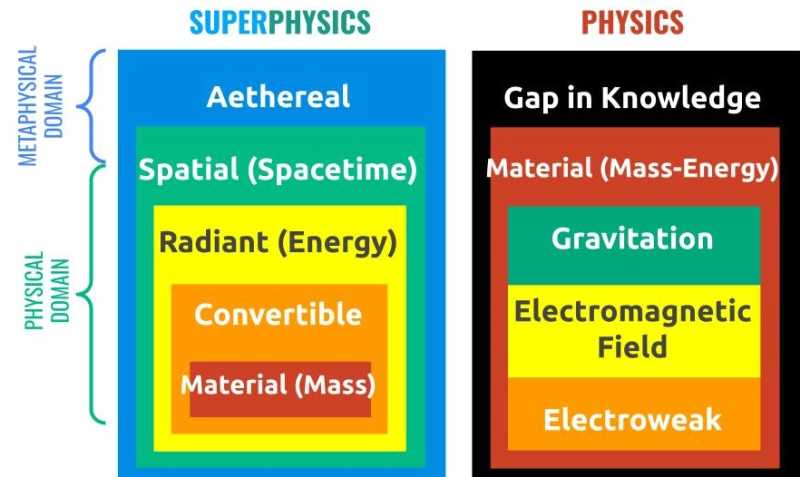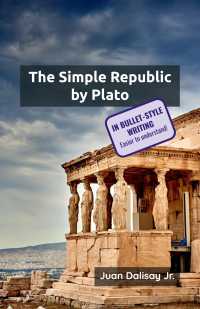The Two Domains
January 1, 2019 5 minutes • 1045 words • Other languages: , , , , , , ,
Table of contents
| Axioms | Propositions |
|---|---|
| There are 2 Domains in Reality |
We know the existence of thing through our perceptions of it. Each perception has two aspects:
- physical
- metaphysical
For example, when we see a mug, we have both the physical perception of a mug and a metaphysical idea of a mug nearly at the same time.

The two are one and the same thing displayed through different attributes:
- A circle existing in nature
- The idea of a circle existing
The Two Domains
This means that the mug exists in two domains of reality:
- The physical mug exists in the physical domain, which we see and touch.
- This mug is made of glass.
- The metaphysical mug exists in the metaphysical domain, as our idea of what a mug is.
- This mug-idea is made of aether.
- Unlike the physical mug which we can see and touch, this aethereal mug-idea can only be perceived by our abstract minds.
Let the investigation of forms, which are eternal and immutable, constitute metaphysics.
Let the investigation of the efficient cause of matter, constitute physics.

The Physical Domain
This domain exists only because of our physical senses, most commonly by our sight and touch which are really ’electromagnetic’ types* of perception.
*This will make sense when we talk about the 5 Layers of Reality
- Our senses let us perceive the mug physically by receiving the sensations of light and touch that bounce back to them.
- Invisible and intangible objects are those that do not let sensations of light or touch bounce back.
- An example is the air which lets light and our hands pass through.
Humans should learn the difference between the idols of the human mind and the ideas of the divine mind. The former are mere arbitrary abstractions. The latter are the true marks of the Creator on his creatures, as they are imprinted on, and defined in matter, by true and exquisite touches.
Truth and utility, therefore, are here perfectly identical. The effects are more valueable as pledges of truth rather than as practical benefits
The Metaphysical Domain with Metaphysical Objects, as Ideas
This domain exists only because we have abstract minds which have an innate ability to ‘house’ or have ideas and thoughts.
- We are able to conceive an idea, or think of a thought, if it bounces back in our minds onto our consciousness.
- We are unable to have that idea or thought if it does not bounce back to our consciousness.
An example of a metaphysical object not bouncing back is when we forget a password to our email.
The password was in our minds in the past. But our consciousness could not ‘find’ it because the effort that the mind exerts in remembering it does not bounce back with the actual password.
It would be like querying a database without the query returning anything.
Another example is a problem that we have no solution for, such as:
- how to increase sales that are declining, or
- how to make a device work.
In such cases, we think about the solution by:
- brainstorming, or
- tinkering with the device
Even then, the solution might still not reflect to our consciousness.
The solution might finally reflect after we:
- ask our customers directly, or
- read the device’s user manual.
At that moment, our minds feel a relief since its effort can end.
The Metaphysical Domain Versus the Physical Domain
The metaphysical domain exists inside our abstract minds and is infinitely larger and richer than physical domain of our senses.
We call this domain “aethereal” or made of aether or akasha in Hinduism. This will be explained later when we explain our Five Layer Model.
These 3 regions of metaphysical domain, physical domain, and current perception (as a merger of both) are expressed in our Superphysics icon.

- The blue upward triangle reprsents the metaphysical domain going upwards
- The green downward triangle represents the physical domain going ‘down to earth’
- The yellow circle represents the focus of the mind as the here and now, as a combination of both.
The balance of the triangles represents the balance between the abstract and the concrete. We can’t focus on useless theory all the time. Nor can we go around doing physical actions without thinking of their causes and effects.
Inaction leads to nothing. But haste, on the contrary, also makes waste.
Human minds have limited abilities and so our focus must be relevant in order to maximize and concentrate what little we have. For example, as a species, it would be better to focus on solutions to global warming than to think of how to make more money, create a new cryptocurrency, or predict the stock market. The latter ideas are really based on selfish-interest instead of the common-interest.
The next chapter will explain the nature of ideas, which are the main objects in the metaphysical domain.






